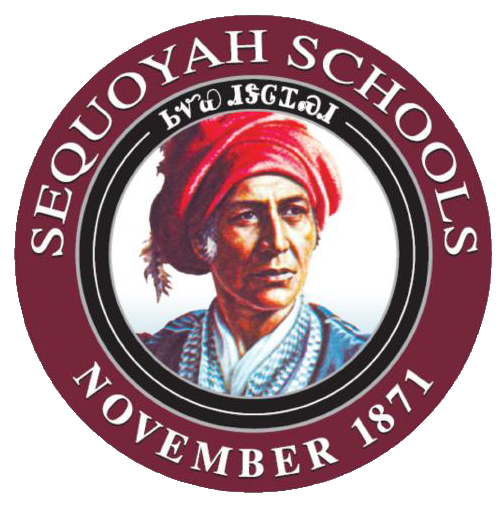Sequoyah Schools
1871 – 2021
150 Years Old and Going Strong
The importance of education has always been in the minds and hearts of the Cherokee Nation and its people. Through great struggles and changes in their history, the Cherokee have found ways to educate and care for all their tribal members.
After the American Civil War ended, there were great numbers of Cherokee orphans struggling to survive. Some were being cared for by close relatives or distant ones, but for many, there was no one. As the Cherokee National Council began to rebuild their government, their society and their lives, it became apparent that they needed a better way to take care of this most important and vulnerable portion of their people. On November 25, 1871, the Cherokee National Council adopted a resolution to create the Cherokee Orphan Asylum.
The Cherokee Orphan Asylum was to be a place to care for and educate Cherokee orphans until they were able to care for themselves. The Commissioners to oversee the institution were nominated by the Chief and confirmed by the Senate which led to the doors being opened on March 4, 1872 in the Male Seminary building with great ceremony. The Commissioners were directed to search for a suitable location for permanently locating the Cherokee Orphan Asylum so that the Male Seminary could reopen after being closed during the Civil War. The Lewis Ross estate on Grand River near Grand Saline, Indian Territory (now Salina, Oklahoma) was determined to be the best possible location in the Cherokee Nation and the property was purchased for $28,000. The first enrollment was one hundred and twenty-five pupils and there were five employees.
The first superintendent was Rev. Walter Adair Duncan, who guided the institution for ten years from its opening in the Male Seminary to its move to Grand Saline and then oversaw the expansion to the building to allow for the care of more pupils. Others who served as superintendent under the Cherokee National Council included: Rev. Joseph F. Thompson, 1882-1894; William Wallace Ross, 1894-1897; Rev. Joseph F. Thompson, 1897-1901; John Henry Dannenburg, 1901-1902; and Elias Cornelius Alberty who was superintendent when the Cherokee Orphan Asylum was accidently destroyed by fire on November 17, 1903.
The Cherokee National Council immediately relocated as many pupils to the Male and Female Seminaries near Tahlequah as space allowed, sent others to the care of relatives and placed the remaining in the Whitaker Orphan Home at Pryor Creek, Indian Territory (now Pryor, Oklahoma.) Knowing that Oklahoma Statehood and the end to tribal government was nearing, the National Council had to do something immediately to make sure their orphans would continue to be cared for. It was decided to remove those in the Cherokee Home for the Insane, Blind, Deaf, Dumb and Indigent to the old national prison in Tahlequah and transfer the Orphan Asylum to that location. By May 26, 1904, the pupils were moved in to the current campus near Tahlequah.
In 1910, the name of the institution was changed to the Cherokee Orphan Training School and in 1914 it was sold to the United States for the sum of $5,000. The school was placed under the supervision of the Secretary of the Interior to be conducted as an institutional school for the Orphan Indians of Oklahoma belonging to the restricted class.
The name of the school was changed to the Sequoyah Orphans Training School by a provision in the 1925 Interior Appropriation Bill which then allowed restricted orphans from the other Five Civilized Tribes. To go along with the changing intent of the school, its name was changed to the Sequoyah Vocational School in 1945. The name was changed again in 1964 when the lower grades were sent to other Indian schools, leaving grades 9-12 and the school became Sequoyah High School.
Sequoyah was scheduled to be closed in the mid-1980s as part of President Ronald Reagan’s budget cuts. Alumni, tribal officials and friends of the school fought to keep the school open which was accomplished when the Cherokee Nation contracted to operate the school from the Bureau of Indian Affairs beginning in November 1985. In 2006, the Cherokee Immersion School was organized and was added the high school to now become Sequoyah Schools.
Through the years, Sequoyah has gone from caring for and educating Native American orphans, to a school of “Last Resort” for Native youth struggling in public and other schools, to becoming a “School of Choice”. Alumni from Sequoyah have gone on to colleges and universities all over the United States, including Harvard, Dartmouth and West Point. Students from many tribes have attended and graduated from Sequoyah as they now lead their tribes on their tribal councils, in administration and as employees.
Sequoyah Schools have produced Oklahoma State Championship teams and individuals in nearly every sport offered. There have been several athletes who have even gone on to play sports professionally.
Sequoyah Veterans have joined and fought for their country, their tribe and their family in every branch of the military; Twenty-two having given the ultimate sacrifice. Names of these heroes are honored on the Sequoyah Veterans Monument located on the Sequoyah Schools campus.
Virtually every profession includes Sequoyah Alumni who are scattered all over the United States. Numerous tribes have been represented at the school through the years as Sequoyah celebrates its 150 years of existence during the 2021-2022 school year. Sequoyah has a proud tradition to uphold as it continues on in to the future.
